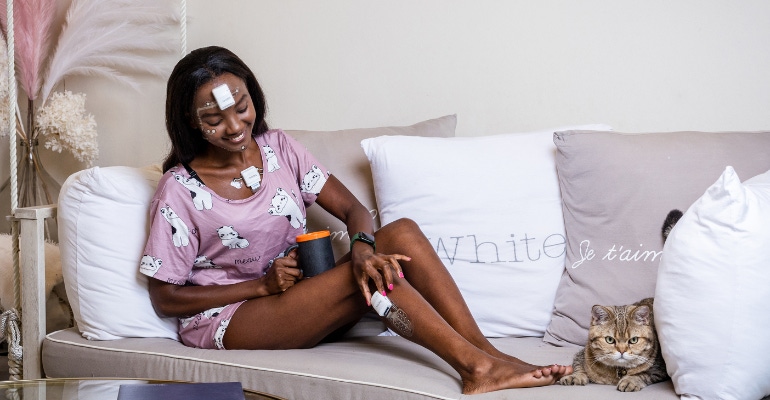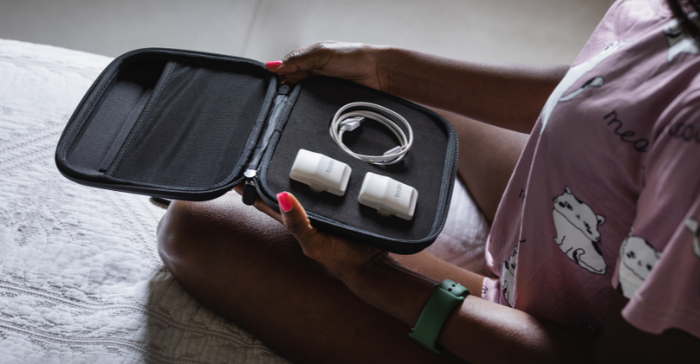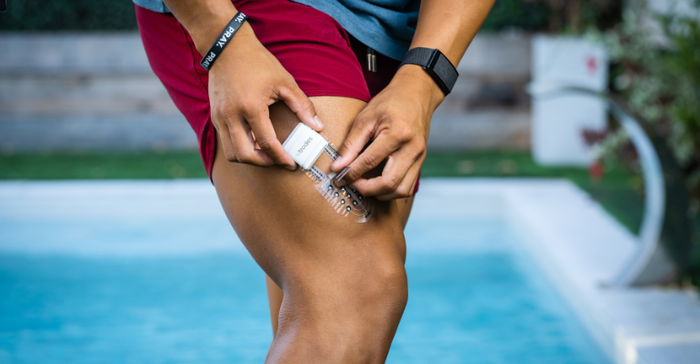The Israeli startup wants to bring medical-grade sleep monitoring capabilities to the home.
July 21, 2022

A company spun out of a nanotechnology lab at Tel Aviv University is trying to redefine electrophysiology monitoring.
Armed with more than a decade of research, Herzliya, Israel-based X-trodes has developed a wireless wearable technology designed to monitor brain activity (electroencephalography, or EEG), eye movement (electrooculography, or EOG), muscle stimulation (electromyography, or EMG), and cardiac monitoring (electrocardiogram, or ECG/EKG). The technology operates like a flexible smart skin, sticking to an area of the body much like a bandage.
Recognizing a gap in electrophysiology monitoring, Ziv Peremen, now CEO at X-trodes, turned to Yael Hanein, a professor of electrical engineering at the university, and an expert in the field of human-machine interface.
"I told her that today, when we try to measure the brain, we have a technology gap because all the other solutions are limited," Peremen told MD+DI. "They’re very cumbersome, large, and once you try to go to a smaller [form factor] or outside the clinic, you need to compromise on the quality of the signal that you get."
So, Peremen, who holds a PhD in neurocognitive science, asked Hanein if she could solve the problem. It took her five years, but the solution she came up with was even better than he'd asked for.
"I said, well, it's amazing to measure the brain, but actually it could measure many other aspects of our physiology," Peremen said. "And this is the point where we decided, 'okay, we have something unique here, let’s open the company'."
So, three years ago, they founded X-trodes, with Hanein serving as the company's chief technology officer. Their vision is to try to redefine electrophysiology monitoring in a natural environment, such as an individual's home. The picture below shows a close-up of the X-trodes system in a storage case.

Not just another health sensor
Given the rapid growth of sensors in healthcare, it's no surprise that Peremen wanted to emphasize during an interview with MD+DI that what X-trodes has developed is not just another sensor, but a platform technology. He also mentioned that the technology has already been validated by researchers, clinicians, and other groups that work in the electrophysiology monitoring space.
"For me, the most exciting part of it is the potential to use it not only for one specific application — and we do have a specific application that we decided to start with, sleep — but I'm really excited about the fact that we have here a platform," Peremen said.
Electrophysiology monitoring currently has more than 100 clinical uses, he said. By developing a platform technology, X-trodes could potentially pursue clinical applications ranging from monitoring for a sleep condition, neurodegenerative disorders, heart conditions, and much more. Best of all, he said, the platform is designed to bring most of these uses into the home environment.
The smart skin patches can be printed in any shape and size, depending on where it will be used on the body, Peremen explained. The electrodes are also dry, he said, meaning that they don't require the use of gel. By eliminating the need for gel, there's no concern that the signal will weaken over time as the gel dries.
"So, basically, you can walk with it for a full day, 24 hours, with a stable signal," he said, adding that it can even be used during dynamic movement activities such as jogging or cycling.

After the data is collected, it is transferred to a personal device such as a phone or tablet, and then to the cloud.
The X-trodes system is currently available for research purposes, but the company is also in pre-submission discussions with FDA and plans to seek a 510(k) clearance to use the technology for clinical applications.
About the Author(s)
You May Also Like




